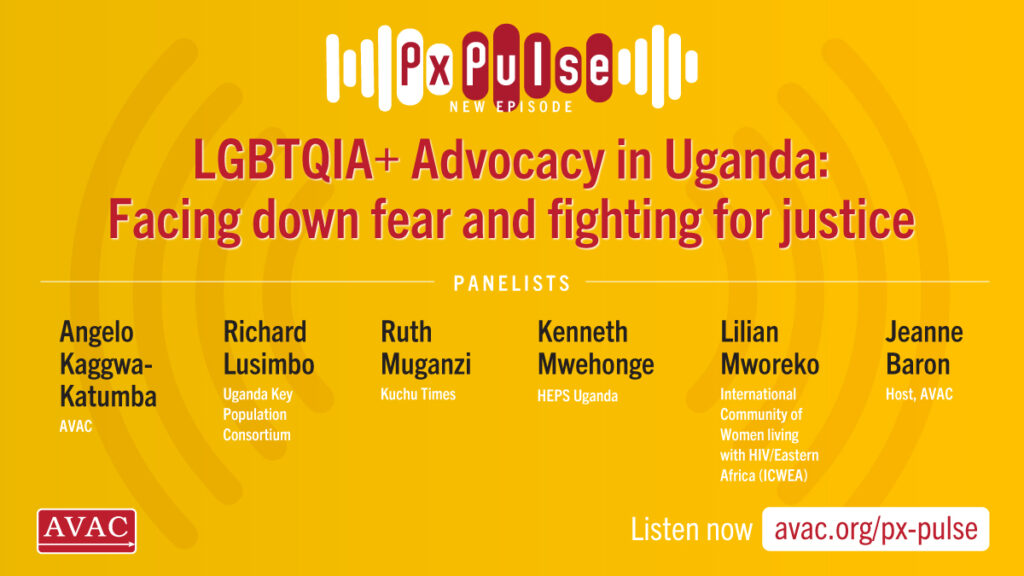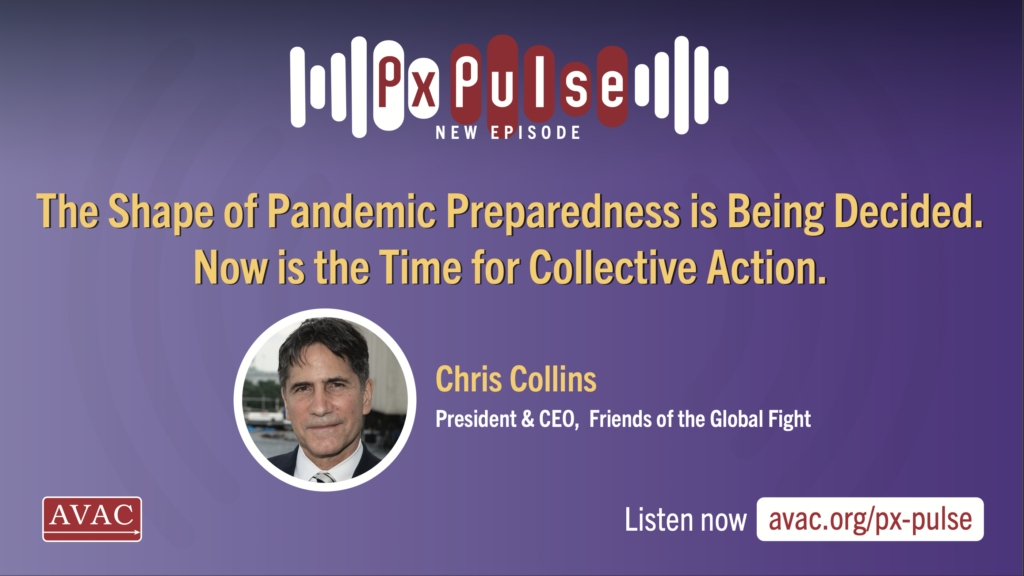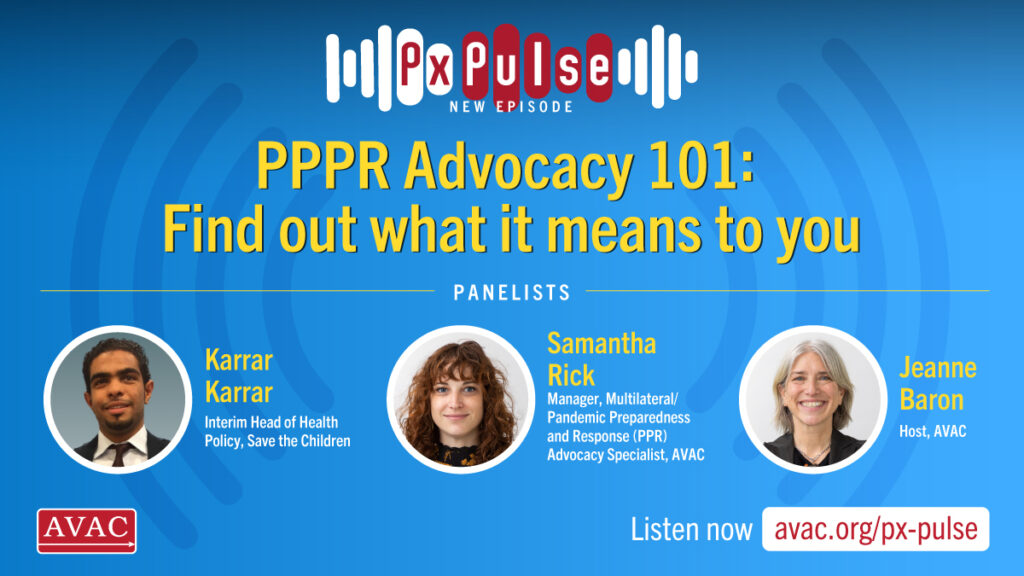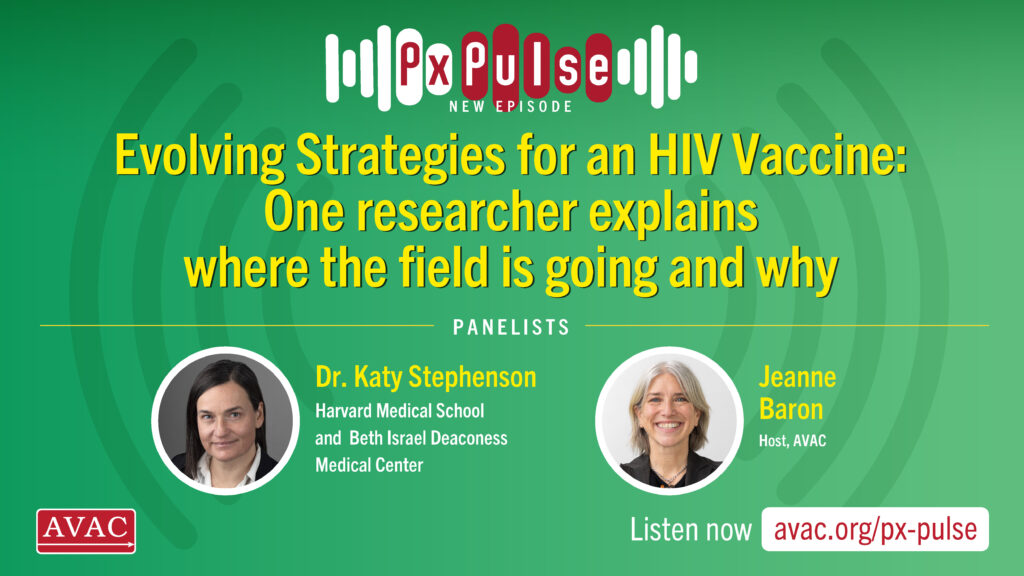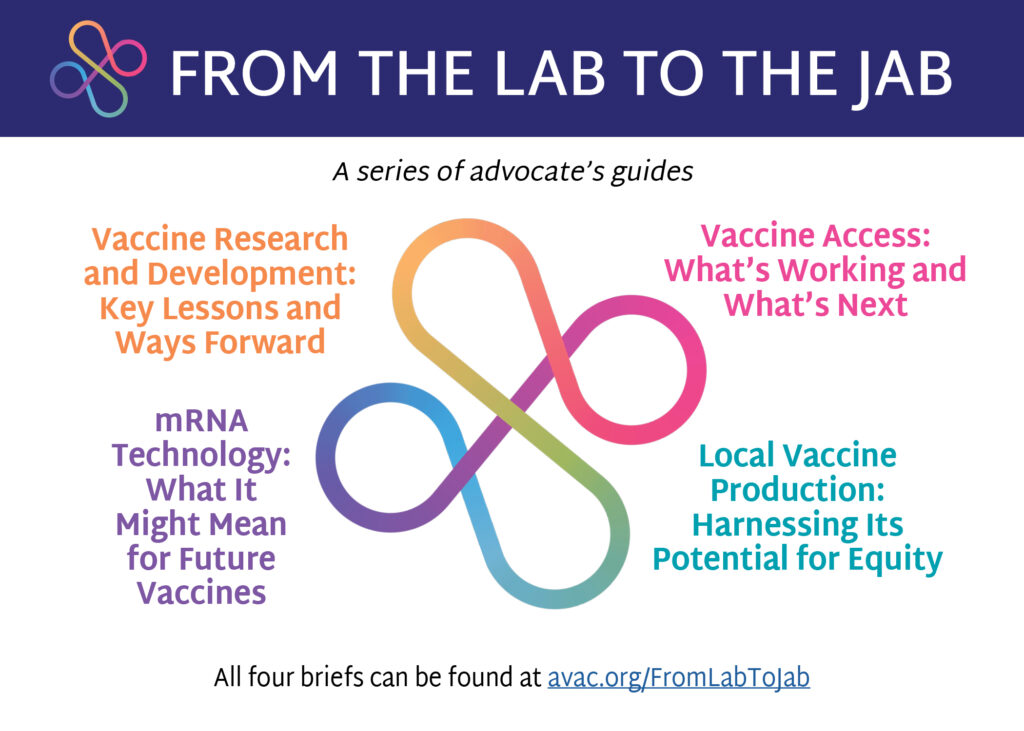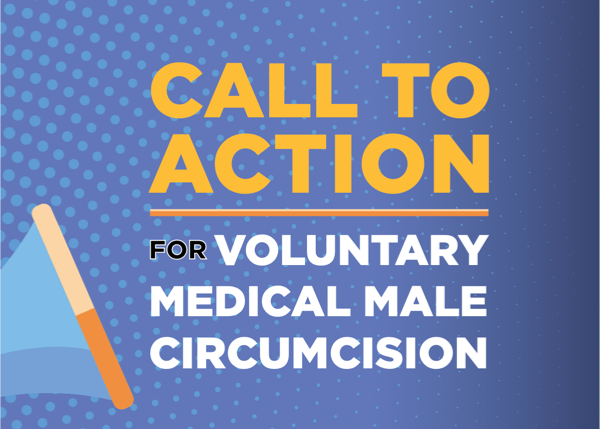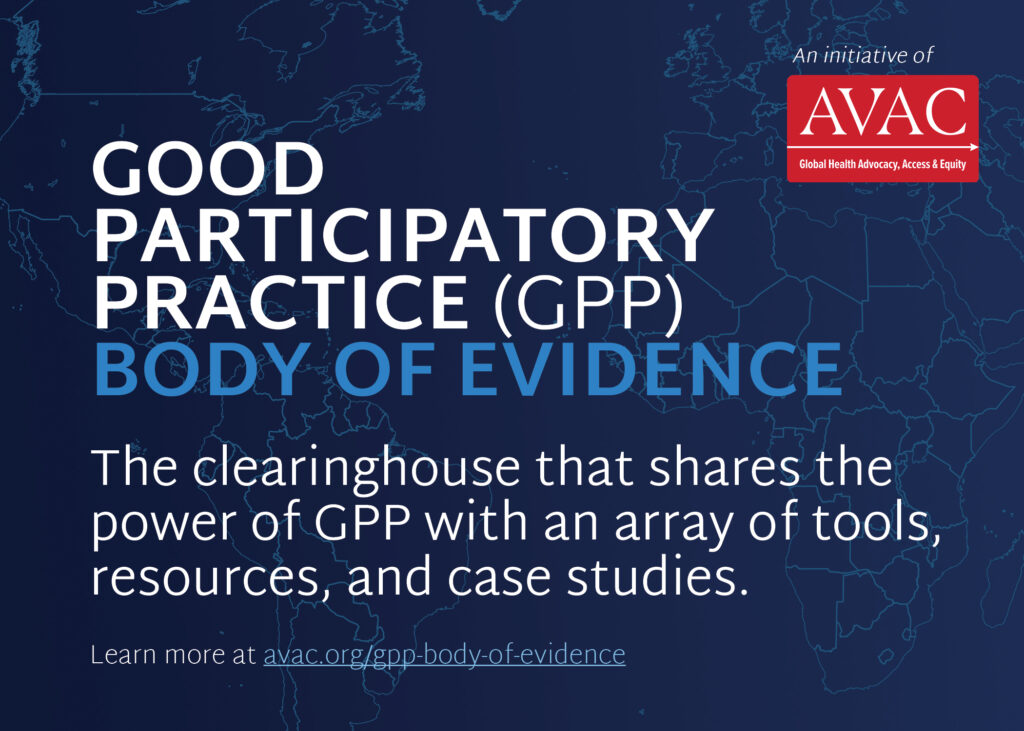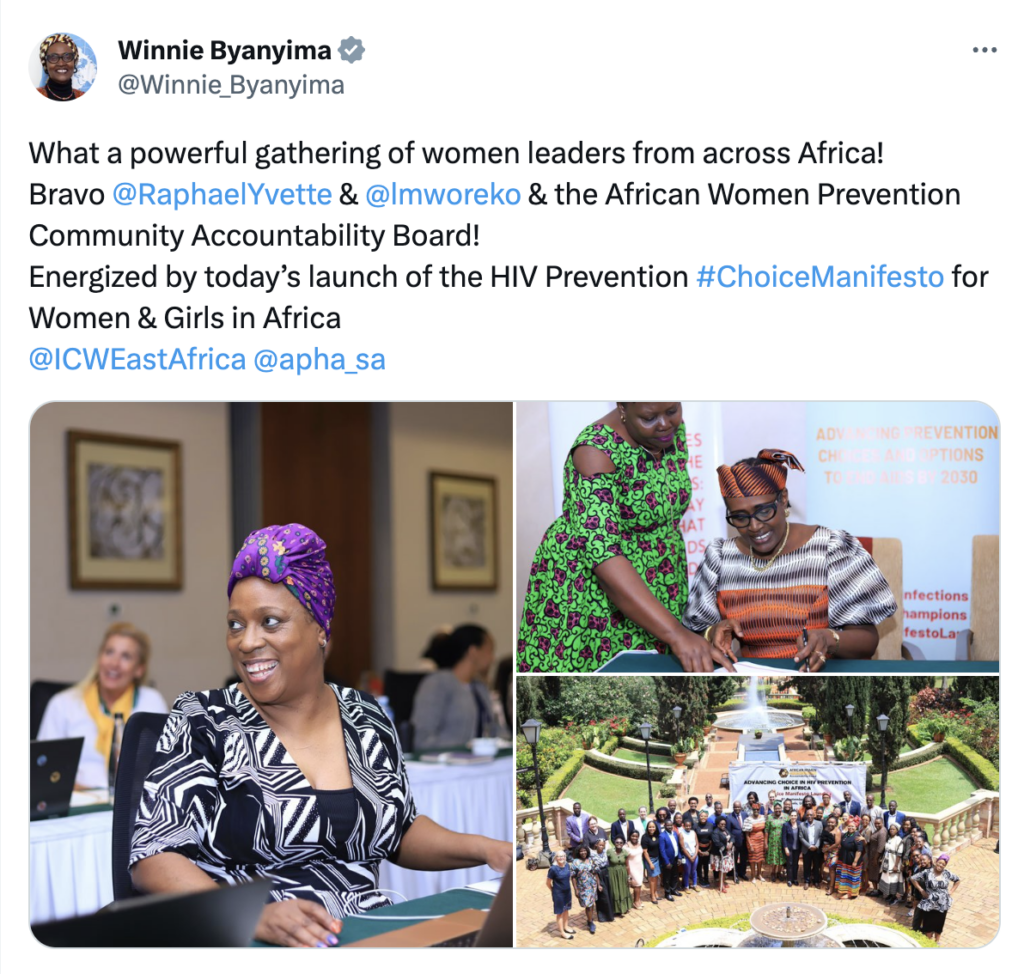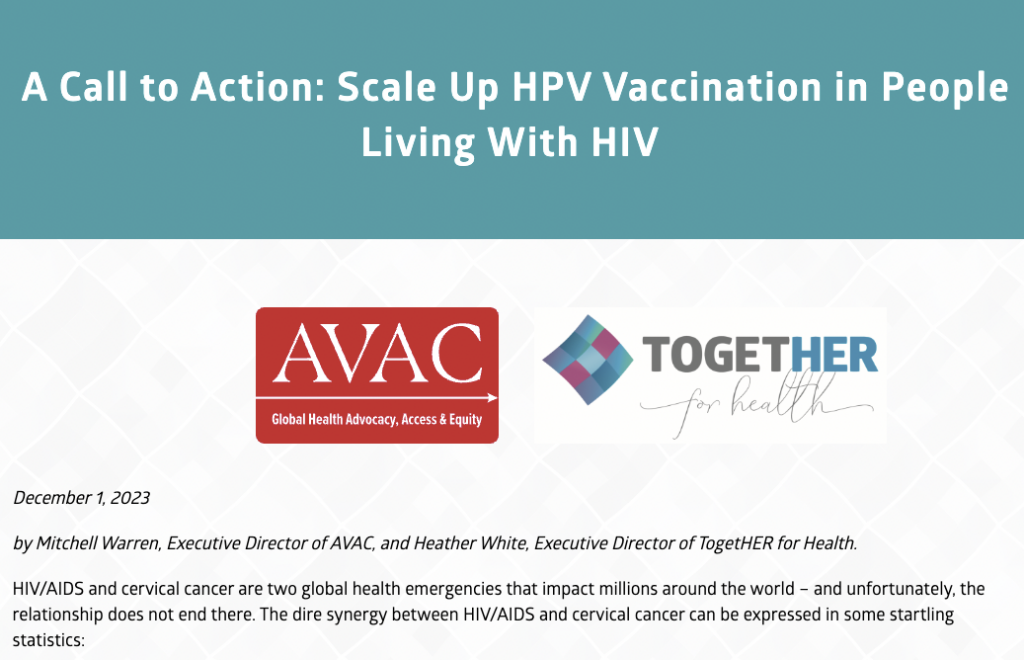By Mitchell Warren, Executive Director of AVAC, and Heather White, Executive Director of TogetHER for Health. This post first appeared at togetherforhealth.org.
HIV/AIDS and cervical cancer are two global health emergencies that impact millions around the world – and unfortunately, the relationship does not end there. The dire synergy between HIV/AIDS and cervical cancer can be expressed in some startling statistics:
- Cervical cancer is on the relatively short list of “AIDS-defining illnesses”—cancers and opportunistic infections that can be life-threatening to people living with HIV.
- Women living with HIV are up to six times more likely to develop invasive cervical cancer than their HIV-negative peers.
- Women testing positive for infection with the human papillomavirus (HPV) that causes almost all cervical cancers are twice as likely to be infected with HIV.
- The proportion of cervical cancer cases attributable to HIV is greater than 40% among the eight countries with highest HIV prevalence in sub-Saharan Africa, compared to less than 5% in 127 countries with lower HIV prevalence, highlighting major disparities in the global burden.
Additionally, HIV/AIDS and cervical cancer share many barriers to effective prevention, treatment, and care. Efforts to provide services to address both diseases are beset with social stigma and misinformation.
Due to their elevated risk of disease, women living with HIV, and those at risk of HIV are considered priority populations for cervical screening. The US President’s Emergency Plan for AIDS Relief (PEPFAR) invests more in cervical cancer screening and treatment in low- and lower middle-income countries than any other funder. The Global Fund to Fight AIDS, TB, and Malaria will also fund requests for cervical cancer prevention aligning with HIV prevention programs. The SUCCESS collaboration funded through Unitaid and implemented by Expertise France, Jhpiego, and the Union for International Cancer Control (UICC) is introducing and promoting the best available screen-and-treat tools to prevent cancer in women most at risk, especially those living with HIV.
But these lifesaving efforts are only reaching a fraction of those in need.
While efforts to develop a preventive vaccine against HIV are underway, vaccines against HPV have proven to be safe and effective for people already living with HIV—greatly reducing their chance of developing cervical cancer. Given their enhanced likelihood of developing cervical cancer, it is critical to focus additional attention on vaccinating people living with HIV, as well as young people vulnerable to both HIV and HPV infections. Unfortunately, few targeted efforts to ensure widescale uptake of HPV vaccination in people living with HIV have been made.
According to data from the World Health Organization (WHO), only around 25 percent of women living in the Africa Region – the region with the highest burden of HIV/AIDS—are currently vaccinated against HPV. Current WHO guidance recommends at least two doses of HPV vaccine for people living with HIV, requiring not just effective implementation of initial vaccination but also efforts to ensure subsequent follow-up to complete the recommended regimen. A lack of disaggregated data on the proportion of people living with HIV who remain unvaccinated against HPV hampers the creation and implementation of targeted HPV vaccination strategies in populations with increased chance of acquiring HIV.
It’s well past time to build an evidence-based plan to ensure access to critical comprehensive health services for adolescent girls and young women at risk for HIV, or those living with the disease, using a lifecourse approach. Specifically, to improve coverage of HPV vaccination, we call on global bodies to take urgent steps to:
- Assess the current status of HPV vaccination among girls and women living with HIV. A dearth of reliable global and regional data must be addressed if we are to ensure wider uptake of HPV vaccination in populations of people living with HIV. Effective monitoring of is a critical first step toward addressing the gap in HPV vaccination coverage for people living with HIV.
- Create evidence-based HPV vaccination strategies for people living with HIV. Programs should take advantage of opportunities to integrate HPV vaccination alongside HIV prevention, treatment, and care services, alongside outreach and awareness activities to break down stigma and combat misinformation.
- Build the evidence base supporting HPV dosing schedules for people living with HIV. Current WHO guidance has shifted to a single-dose regimen for HIV-negative populations. Clinical research can affirm the need for multi-dose regimens for people living with HIV, but may also support a shift to single-dose schedules that can ensure wider access to more individuals.
This call to action couldn’t be more timely, as one lingering constraint to accelerating access to HPV vaccination for people living with HIV—limited vaccine supply—is expected to be all but removed in the near future. UNICEF projects that by 2024 the supply of HPV vaccines will for the first time align with the demands of the programs UNICEF services, most notably Gavi, the Vaccine Alliance, the most prominent implementer of HPV vaccination services in low- and lower middle-income countries. Gavi’s ambitious goal of vaccinating 86 million adolescent girls in its focus countries against HPV by 2025 presents a unique opportunity to close a vaccination gap in people living with HIV.
Today – December 1st – is World AIDS Day. Two weeks ago on November 17th, the world marked the third annual Cervical Cancer Elimination Day of Action. The proximity of these two days of advocacy provides an opportunity to highlight another connection shared by HIV/AIDS and cervical cancer: the opportunity to invest to end these dual health threats by scaling up effective services and meeting global targets – the 95-95-95 HIV treatment goals set by UNAIDS and the 90-70-90 cervical cancer prevention goals set forth by WHO.
UNAIDS’ Global AIDS Strategy incorporates sub-goals for women and girls vulnerable to developing cervical cancer, representing a confluence of these two remarkable global health endeavors. The Strategy calls for:
- 90 percent of girls aged 9–14 in priority countries gaining access to HPV vaccination;
- 90 percent of women living with HIV being provided access to integrated or linked services for HIV treatment and cervical cancer; and
- 90 percent of women, adolescent girls and young women accessing sexual and reproductive health services, including for HPV and cervical cancer, that integrate HIV prevention, testing and treatment services.
The alignment of HIV/AIDS and cervical cancer targets reflects an evidence-based understanding that ending preventable deaths from these two diseases is best done in tandem.
We know that effective plans supported by sufficient political and financial support can achieve these goals—saving millions of lives. The time to invest to ensure that people living with HIV can live their lives without the threat of cervical cancer is now.

